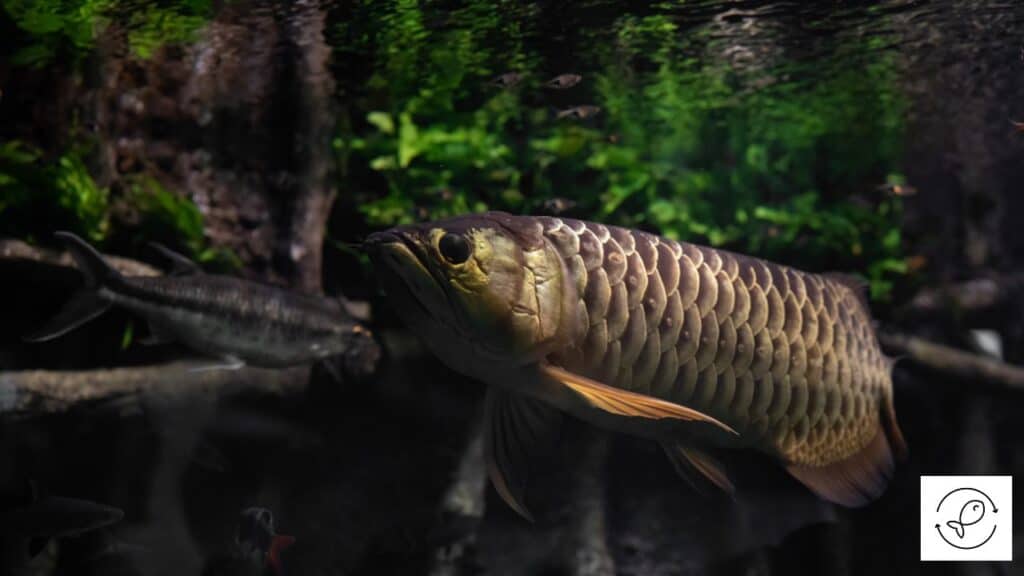Arowanas are popular in the aquarium hobby due to their large size and variety of colors, patterns, and types.
However, these fish can be unsuitable for novice aquarists since they need a specific setup and special care to thrive in captivity.
So let’s learn about arowanas in more detail.
Arowana Species Overview
Arowanas are distributed worldwide and can be found in Asia, Africa, Australia, and South America.
The Asian and the silver arowana are extremely popular in the aquarium hobby.
These fish need a large tank with special maintenance. They are also typically aggressive and solitary fish.
You can keep young arowanas with other fish.
However, keeping them with other fish will become challenging since arowanas will eventually grow to a large size.
Scientific Classification
Kingdom: Animalia
Phylum: Chordata
Class: Actinopterygii
Order: Osteoglossiformes
Family: Osteoglossidae
Subfamily: Osteoglossinae (named by Charles Lucien Bonaparte in 1831)
Genera: Osteoglossum, Phareodus, Scleropages
Appearance
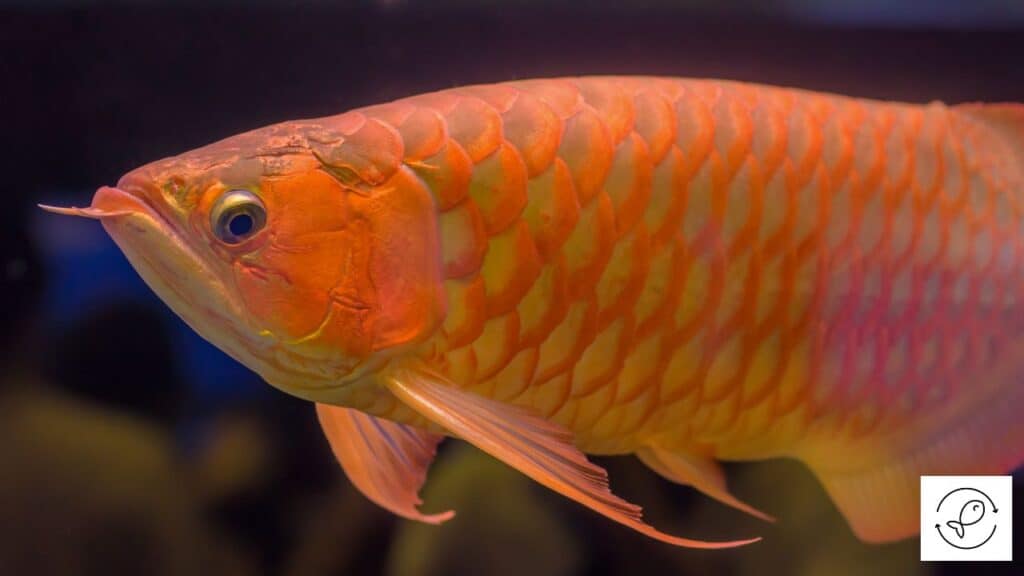
Arowanas have a unique appearance because their dorsal and anal fins are short, soft, and elongated.
This unusual appearance makes them look like they have a very long tail fin.
Arowana species come in various colors, including blue, red, and silver.
They have a large mouth that faces upward. It helps them capture potential prey from the water’s surface.
Arowana Types
Arowanas are freshwater bony fish. They belong to the subfamily Osteoglossinae, also known as bony tongues.
However, this name is now reserved for fish of the sub-family Arapaiminae.
The different types of arowanas are:
- African Arowana,
- Australian Arowana,
- Asian Arowana,
- Silver Arowana,
- Black Arowana,
- Jardinii Arowana
- Spotted Arowana
- Green Arowana,
- Red Arowana,
- Golden Arowana,
- Myanmar Arowana,
- Southern Saratoga, and
- Platinum Arowana.
Some of these arowana species are prevalent in the aquarium hobby.
Lifespan
Arowanas have a long lifespan and are known to live up to 20 years in their natural habitat.
They can survive up to 15 to 20 years in captivity if you keep them in suitable conditions and give them proper care.
Unstable water parameters stress arowanas, which reduces their lifespan.
So you should provide them with good-quality water to minimize illnesses.
For more information on how to make these fish live longer, read our arowana lifespan guide.
Average Size
Arowanas can grow up to 3 feet in length in their natural environment.
In aquariums, arowanas can reach a length of up to two to three feet.
There are several factors that influence their growth, especially in confined environments.
So it’s essential to provide them with a large tank, a protein-rich diet, stable water conditions, and stress-free habitat for their optimal growth.
For more information on how big these fish grow, read the arowana size guide.
Arowana Tank Setup
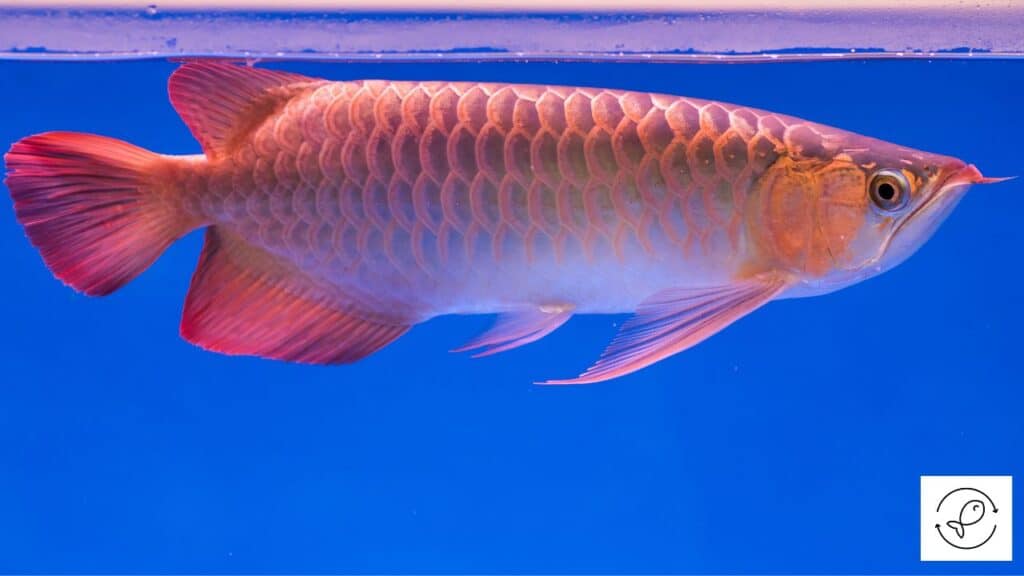
When setting up an arowana tank, it’s essential to remember that these fish need ample space due to their large size.
Creating a balanced ecosystem that replicates their natural habitat is essential for making these fish feel safe and comfortable.
So let’s understand the tank requirements of arowana fish in more detail.
Tank Size
An adult arowana should be housed in an aquarium of at least 250 gallons due to its enormous size.
A large tank will provide this fish with ample swimming space. It will also help the arowana grow to its full potential size.
So the aquarium should be long and wide with more horizontal space to make sure there is more swimming space.
You can keep young arowanas in a 60-gallon tank.
However, investing in a large tank is better because these fish will outgrow the small tank in a few months.
For more information on the ideal tank size for arowanas, read the arowana tank size guide.
Tank Equipment and Decorations
An arowana tank should have open spaces and plenty of plants. However, only add aquatic plants to their tank.
When decorating the fish tank, use items that don’t have sharp edges to prevent injuries to arowanas.
Either use fine gravel or sand because these fish don’t stay at the bottom of the tank.
Arowanas usually swim at the water’s surface.
So secure the tank lid to prevent them from jumping out of the tank.
Use appropriate lighting for the arowanas to showcase their colors and beauty.
Arowanas also need a robust filtration system since they create a lot of waste, which impacts the water quality.
Given below are the items that you should keep in an arowana tank:
- Substrate (gravel or sand),
- Aquatic plants like Anubias or floating plants (to cover the surface),
- Aquarium Filter,
- Aquarium Heater,
- Moderate aquarium lighting,
- Thermometer,
- pH testing kit,
- Decorations, etc.
Keeping the tank environment stress-free and comfortable is essential for arowana’s well-being.
Arowana Care
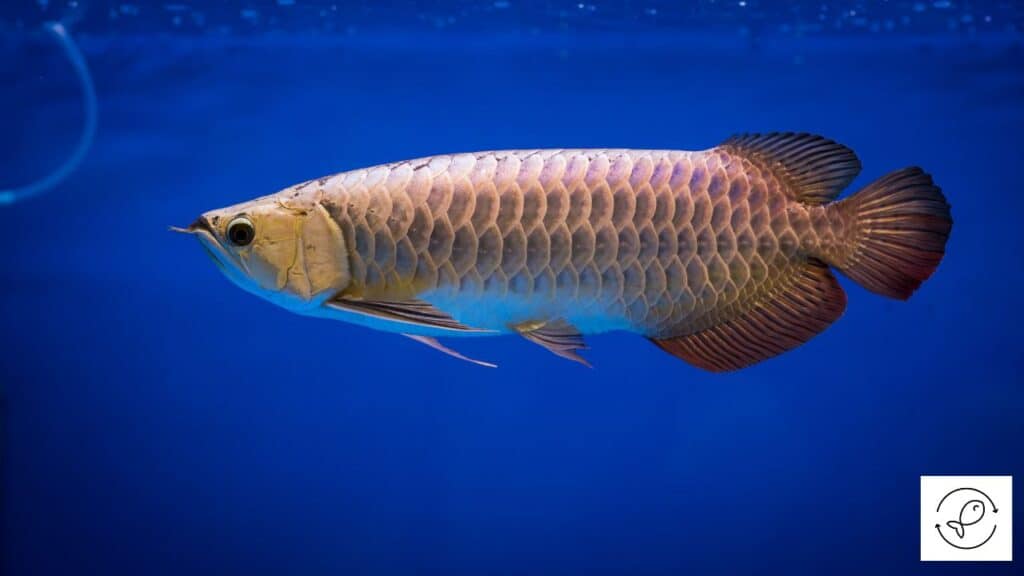
Arowanas need more attention and care than most freshwater species in the aquarium hobby.
A well-balanced diet and clean environment are essential for the well-being and health of arowanas.
Diet
Arowanas are predatory fish with a diverse diet, which includes small birds, fish, reptiles, and insects in their natural habitat.
However, they also consume plant matter whenever there is a food shortage.
These fish aren’t fussy eaters and will happily eat high-protein pellets and fish.
Feed them various fresh or frozen foods to satiate their dietary requirements.
Some of the live food that you must feed arowanas are:
- Shrimp,
- Bloodworms,
- Prawns,
- Shellfish,
- Insect larvae, and
- Small-sized insects.
A balanced diet is necessary for these fish to survive in captivity.
Adult arowanas should be fed either every day or on alternate days.
And young arowanas must be fed twice to three times daily to facilitate proper growth.
Water Parameters
In the wild, arowanas are commonly found in freshwater habitats like rivers, ponds, and lakes.
The water requirements for arowanas can vary depending on the species.
The ideal water parameters for arowanas are:
Water Temperature: 75°F to 82°F (23.8°C to 27.8°C),
Water pH: 6.5 to 7.0,
Water Hardness (dGH): 8 to 12.
Tank Maintenance
Arowanas generate considerable waste. This elevates the ammonia, nitrite, and nitrate levels in the tank water.
So it’s recommended to replace 20% to 30% of the tank water every week for optimal water quality.
An electric vacuum can quickly and effectively maintain large tanks.
However, remove any leftover food from the tank to keep the water clean.
Regular cleaning of the aquarium filter, substrate, and decorations is essential for the proper maintenance of the tank.
Checking the pH level during water changes is also critical for maintaining healthy water parameters.
You should also monitor the water parameters of the aquarium. Use a testing kit to get the correct values.
Common Diseases
Despite their large size, arowanas are susceptible to most aquarium diseases.
Given below are some of the common diseases that can affect arowanas:
- Ich,
- Drop Eye,
- Ulcer,
- Bacterial infections, and
- Parasitic infections.
It’s recommended to replace the tank water regularly and maintain appropriate tank hygiene for the optimum health of arowanas.
Arowana Behavior and Temperament
Arowanas are solitary and predatory fish that typically hunt prey near the water’s surface.
Some arowana species are also known to jump out of the water to hunt for food in their vicinity.
Young arowanas tend to form small social groups, whereas adult arowanas tend to be territorial.
However, arowanas will not be aggressive toward the fish that swim at different levels of the tank.
They also tend to exhibit a peaceful demeanor when placed with other fish of similar size.
Arowana Tank Mates
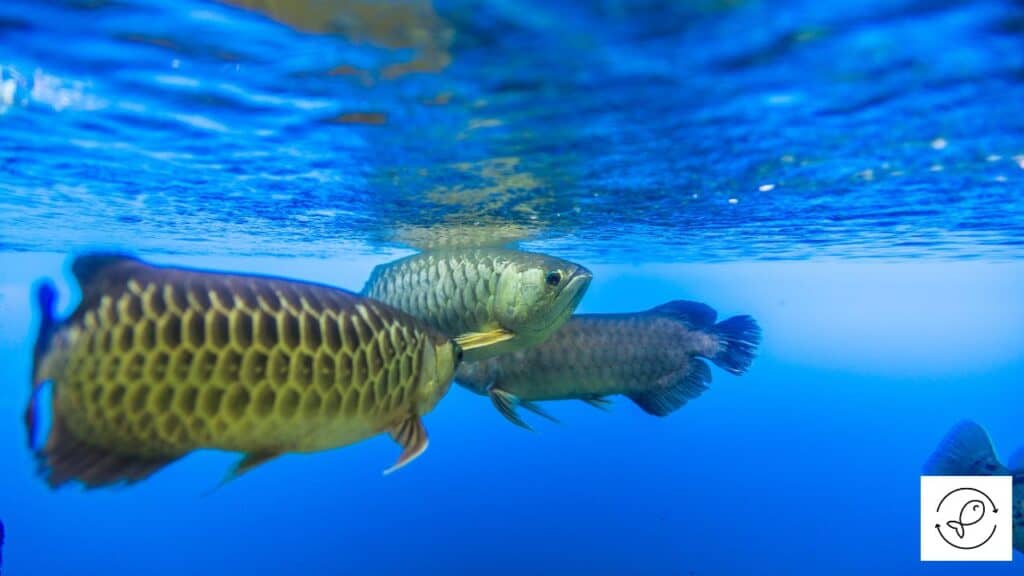
Arowanas are large territorial and predatory fish. So they should be kept with fish matching their size and aggression.
It’s best to house one arowana fish in a tank as they can get aggressive with each other.
If you want to keep more arowanas in your aquarium, the tank must be large enough to accommodate all of them.
Most aquarists keep arowanas with semi-aggressive tank mates.
Some of the compatible tank mates for arowanas are:
- Bichirs,
- Bala Sharks,
- Clown loaches,
- Clown knifefish,
- Datnoids,
- Jack Dempsey,
- Oscars,
- Pacu,
- Parrot cichlids,
- Green Terror Cichlids,
- Jaguar cichlids,
- Gar,
- Plecostomus,
- Redtail catfish,
- Sailfin plecos,
- Tinfoil barbs,
- Silver dollars,
- Siamese tigerfish.
Given below are some of the species that you should avoid housing with arowanas:
Keeping arowanas with peaceful and small fish isn’t advisable as they will end up as arowanas’ food.
Fin-nippers can be aggressive toward arowanas. So they also shouldn’t be kept in the same tank.
Selecting appropriate tank mates for arowanas will ensure a harmonious aquarium environment.
Arowana Breeding
Breeding arowanas is a challenging task. It needs a large tank, time, patience, and dedication.
The first step in breeding arowanas is selecting a compatible pair.
Arowanas tend to choose their partners. So having a single male and female arowana in the tank will not be sufficient.
You can start by dividing the aquarium into two sections and adding a male and female arowana to each section.
The idea is to give them one month to adjust to each other’s sight and scent.
Once they are interested in each other, you can remove the divider.
Adjusting the water temperature and pH levels can promote breeding.
Arowanas are oviparous. This means each female arowana can produce between 20 to 100 eggs, which the male fertilizes.
Arowanas are also mouthbrooders. This means they sometimes hold hundreds of eggs in their mouth.
The male arowana holds the fertilized eggs in his mouth for an average of 50 days until they hatch.
During this time, it’s essential to feed a nutritious diet to your male arowana since he won’t consume regular food while carrying the eggs.
Newly hatched fry have a yolk sac for sustenance in the first few days of their lives.
Once the fry hatch, you must move them to a separate rearing tank with suitable water conditions.
You should also feed them a protein-rich diet consisting of live food, such as brine shrimp or small insects.
Monitor the arowana fry closely and perform regular water changes to ensure proper growth.

